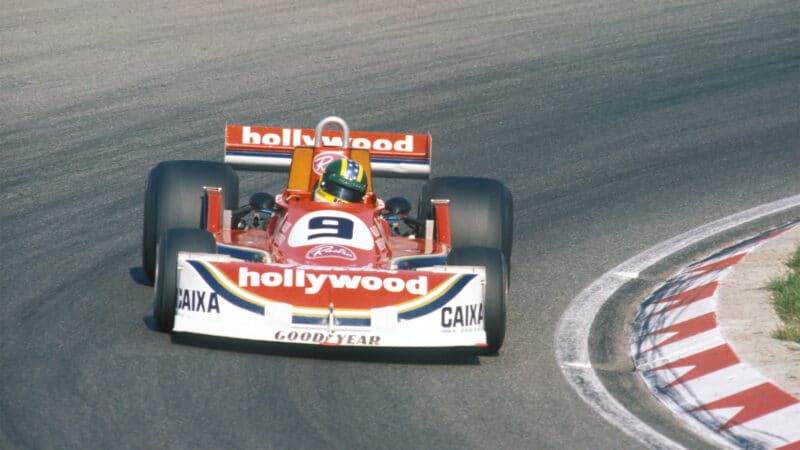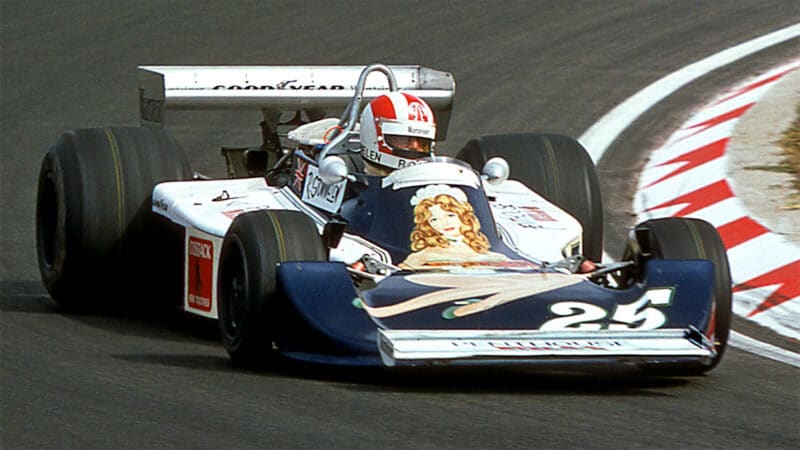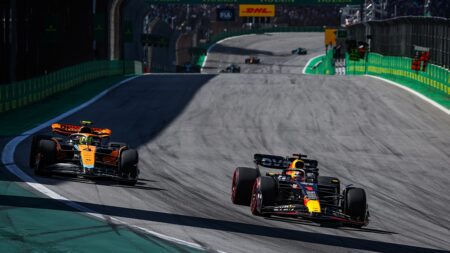OK, let’s go back to racing. In 1977 Ribeiro drove for the works March F1 team, but by then F1 Marches were well past their best, and, despite occasional earlier flashes of brilliance from Jackie Stewart, Chris Amon, Ronnie Peterson and Vittorio Brambilla, in truth their best had never been stellar. Ribeiro entered all 17 rounds of the 1977 F1 world championship, failed to qualify for eight of them, retired from four of the nine grands prix he did manage to qualify for, and failed to score points in any of the other five.
In 1978 he went back to F2, racing a customer March-Hart run by his own tiny team, which he called Jesus Saves Racing. He festooned its nose cone and sidepods in bold ‘Jesus Saves’ signwriting, and he did his best with it. He sometimes struggled, truth be told, but on one glorious afternoon in late April, at Nürburgring Nordschleife, he drove it to an improbable yet brilliant victory. But that was that really: the next year, 1979, his friend Emerson Fittipaldi offered him the opportunity to race a works Copersucar-Fittipaldi in the Canadian and United States Grands Prix, and he failed to qualify it both times.
He then returned to Brazil, where he raced touring cars and occasionally Sud-Am F3 cars, most of them proudly carrying ‘Cristo Salva’ and ‘Jesus Saves’ signwriting. In 1986 he was invited to take on the directorship of Atletas de Cristo, a full-time but unpaid position, and he accepted it. When his wife Barbara asked him how he was proposing to provide for her and their children, he told her that it was part of God’s plan. Somehow they managed.
He travelled with the Brazilian Olympic team to South Korea, in 1988, as its Atletas de Cristo chaplain, and again, in the same role, with the Brazilian football team, to Italy, in 1990. Four years later, in 1994, in the USA, again as Atletas de Cristo chaplain, he played a central role in the motivational management and spiritual guidance of the Brazilian footballers, conducting daily Christian prayer meetings with them, and, whether helped by divine intervention or not, Brazil won the World Cup for the fourth time. Ribeiro wrote a book about the tournament, entitled Who won the 1994 World Cup?, and its 113 pages provided and explained his answer: God.

Brazil-themed ‘Jesus Saves’ helmet was Ribeiro’s trademark, seen here at the 1977 German Grand Prix
Getty Images
After his international single-seater career had fizzled out at the end of the 1970s, in the 1980s he often drove safety cars and medical cars in Brazilian Grands Prix, but that was only ever a haphazard and sporadic arrangement. However, when, in 1999, FIA president Max Mosley decreed that permanent safety car and medical car drivers be selected and appointed, the jobs went to Oliver Gavin and Alex Ribeiro. Gavin was 26, and racing in Formula 3000. Ribeiro was 50, and long retired. I asked the FIA’s chief medical officer Sid Watkins why the old boy had got the gig. “Alex is a wonderful guy: very intelligent, very serene, almost saintly,” he replied. “He’s raced in F1, of course, so he understands the brain — or lack of brain — of an F1 driver. He’s very good at predicting what’s going to happen, too. He’s a great deal more than a rapid chauffeur. He’s driven me in safety cars and medical cars at Interlagos for years, of course.
“The first time he drove me was just after he’d finished racing in F1, and we’d been given a terribly slow car. In those days it was the old Interlagos, which was a very fast and very long lap: five miles. We worked out that we were going to be caught by the F1 cars before the end of lap one, which would have been a disaster. So we arranged to take a short cut from one part of the circuit to another, thereby eliminating the infield loop. Even then it was going to be tight. The short cut involved driving through a gap in a solid armco barrier. Trouble was, the gap was only about a couple of inches either side wider than our car — literally. So we asked the organisers to enlarge the aperture before the race, and they agreed to do so.
“Anyway, when we came upon the gap in anger as we took our short cut on lap one of the race, we found that they hadn’t enlarged the aperture after all — and Alex kept his foot hard on the gas and slid through the gap at more than 100mph without touching the sides. So I thought: ‘This is a pretty impressive young man.’ And now he’s a pretty impressive slightly older man.”

Ribeiro’s medical car at full tilt at the 1999 Austrian Grand Prix
Grand Prix Photo
If you don’t ask you don’t get, I figured. So, since I was then the editor of the world’s best-selling F1 magazine, I asked Sid if I could travel in the back of the medical car on lap one of a grand prix. I expected him to say no. Astonishingly, he said yes, and the grand prix he selected was the Spanish. It was an extraordinary experience, quite unimaginable today. Our car was a souped-up Mercedes-Benz C55 AMG Estate, and I remember sitting on the back seat, excited and incredulous, as Ribeiro pulled to a stop at the end of the formation lap behind the Minardis of Marc Gené and Luca Badoer. Gené failed to get off the line, so Alex flicked the big Merc to the right to avoid him, then, head bobbing from side to side, checking his mirrors to make sure that we would be out of Gené’s way should he suddenly find a gear, he dived past Olivier Panis’ similarly stricken Prost. Other than that, the lap was uneventful, if rapid, although massively slower than the pace of the F1 cars ahead. After Turn 1, indeed, we never saw them again. At the end of the lap Ribeiro peeled into the pits, Watkins barked “OK, that’s your lot,” and I hopped out.




